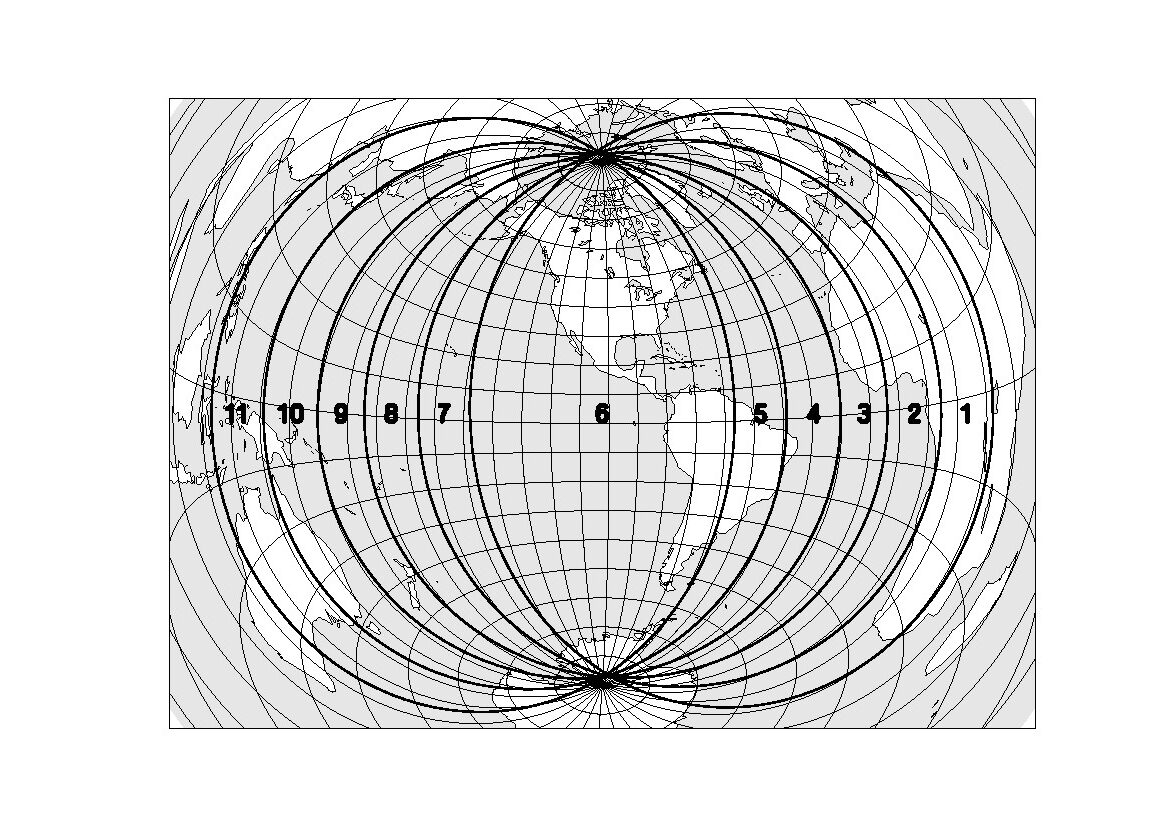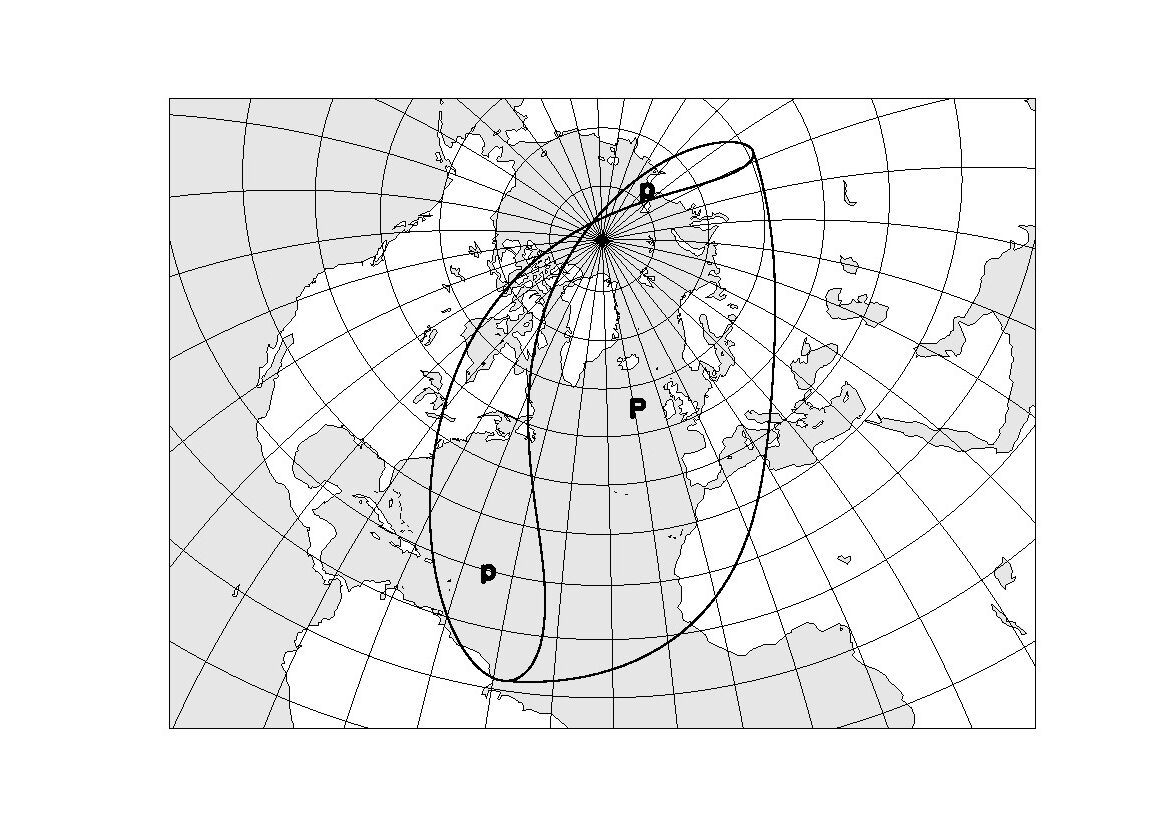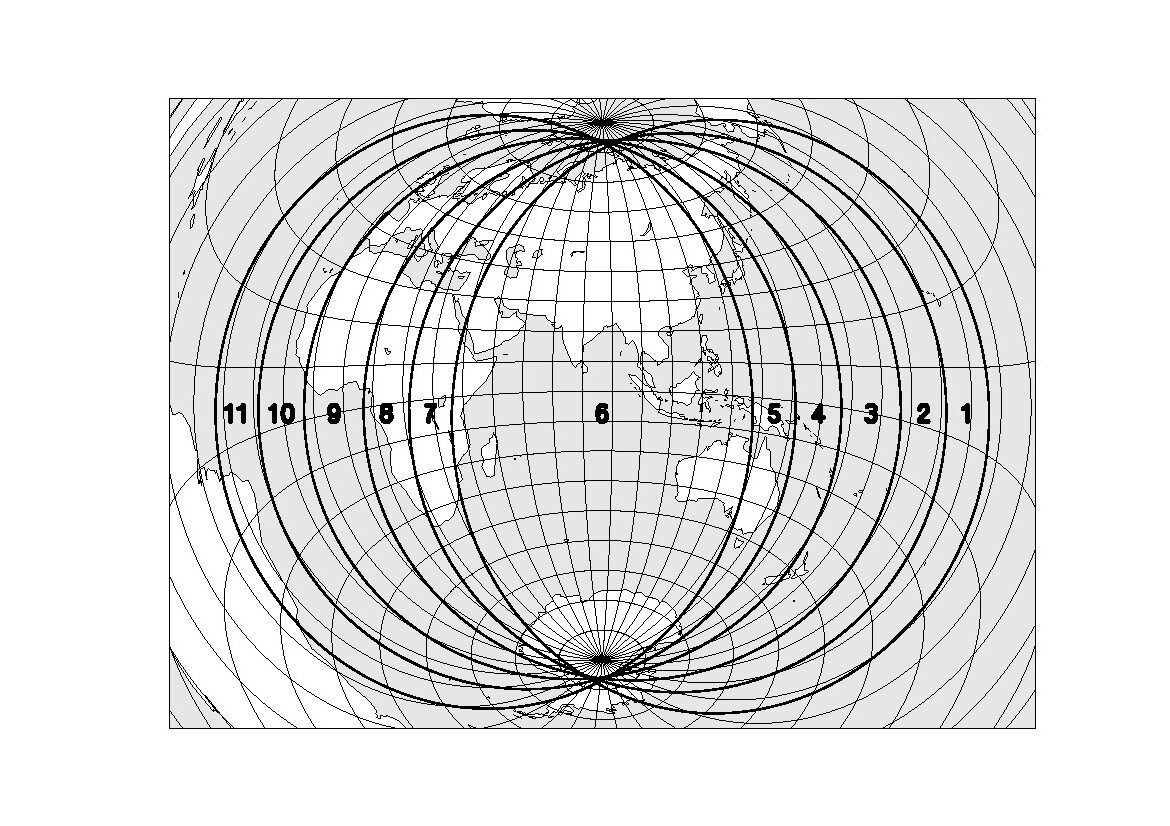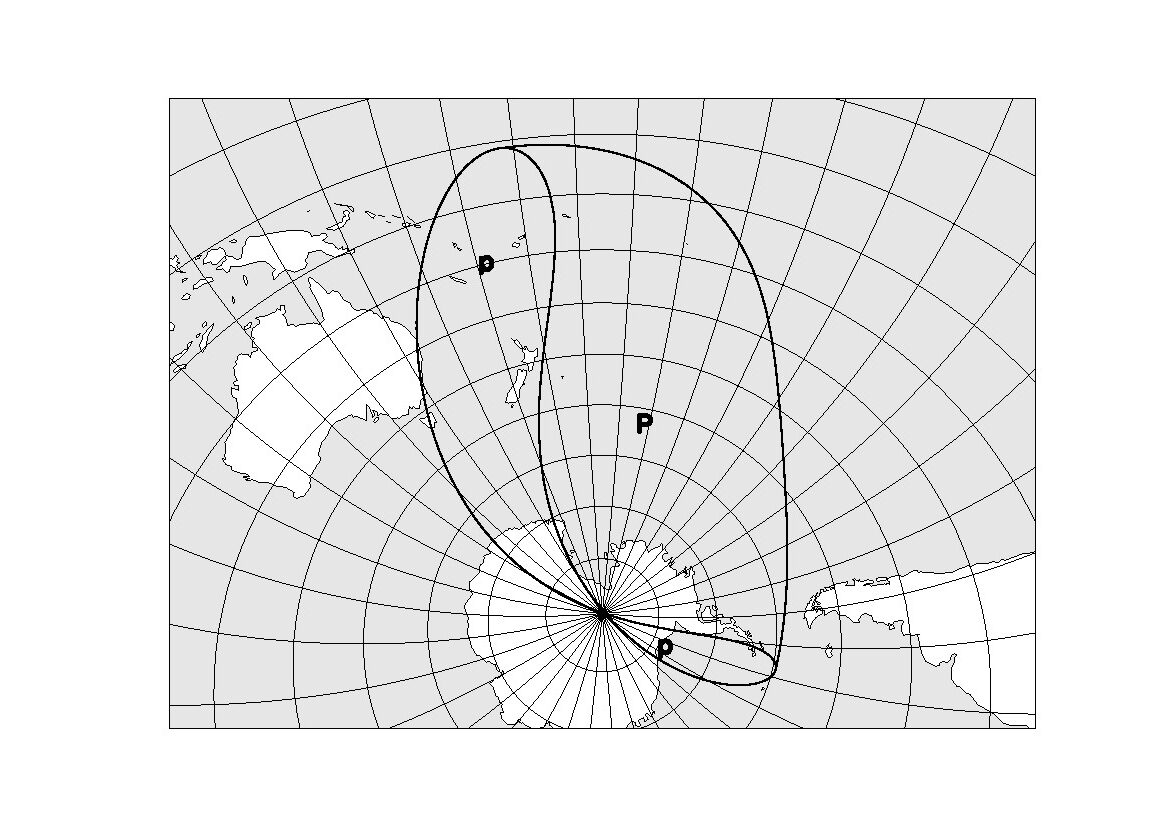In 2025, there will be four eclipses: two solar eclipses and two lunar eclipses
| Date | Type | Visibility |
| 14 March-2025 | Total lunar eclipse | Partially visible in Belgium |
| 29 March 2025 | Partial solar eclipse | Visible in Belgium as a partial eclipse |
| 7 September 2025 | Total lunar eclipse | Partially visible in Belgium |
| 21 September 2025 | Partial solar eclipse | Not visible in Belgium |
I – 14 March 2025 – Total lunar eclipse, partially visible in Belgium
| Phase | Universal Time | Longitude | Latitude | Position angle | Altitude at Uccle/Ukkel |
| Penumbral eclipse begins | 03h55.7 | 057 43 W | 3 25 N | 132 | +19 |
| Partial eclipse begins | 05h09.3 | 075 37 W | 3 07 N | 140 | +8 |
| Moonset at Uccle/Ukkel | 05h59.3 | 087 47 W | 2 55 N | 154 | 0 |
| Total eclipse begins | 06h25.6 | 094 11 W | 2 49 N | 170 | – |
| Maximum of the eclipse | 06h58.8 | 102 05 W | 2 41 N | 209 | – |
| Total eclipse ends | 07h31.9 | 110 19 W | 2 33 N | 248 | – |
| Partial eclipse ends | 08h48.2 | 128 52 W | 2 14 N | 279 | – |
| Penumbral eclipse ends | 10h01.9 | 146 48 W | 1 57 N | 286 | – |
The longitude and the latitude refer to the point on Earth where the Moon is at that time at its zenith. The position angle is defined from the imaginary line that connects the center of the lunar disc to the center of the Earth’s shadow. It is measured at the center of the lunar disc, from the North, in an anti-clockwise direction. At the beginning and at the end of the penumbra and shadow phases, it is the position angle of the contact point. The altitude and times of the Moon’s rise and fall are calculated for its center, without taking refraction into account.
Magnitude of the eclipse: 1.183, the diameter of the lunar disk being taken as the unit.
The map below shows the region where the eclipse is observable. The explanation of the codes used can be found at the bottom of the page.

II – 29 March 2025 – Partial solar eclipse, visible in Belgium as a partial eclipse
| Phase | Universal Time | Longitude | Latitude |
| Eclipse begins | 08h50.7 | 042 39 W | 13 57 N |
| Maximum of the eclipse | 10h47.2 | 076 37 E | 61 08 N |
| Eclipse ends | 12h43.7 | 091 39 E | 71 07 N |
Magnitude of the eclipse: 0.938, the diameter of the solar disk being taken as the unit.
The map below shows the region where the eclipse is observable. The explanation of the codes used can be found at the bottom of the page.

Phases in Uccle/Ukkel – Brussels (Observatory)
| Phase | Universal Time | Position angle relative to the pole | Position angle relative to the zenith | Altitude at Uccle/Ukkel |
| First contact | 10h14min05s | 273 | 291 | +39 |
| Maximum of the eclipse | 11h07min11s | 321 | 329 | +42 |
| Sun at the meridian | 11h47min15s | 001 | 001 | 43 |
| Last contact | 12h01min13s | 010 | 07 | +43 |
Magnitude of the eclipse: 0.348, the diameter of the solar disk being taken as the unit.
The position angle relative to the pole, resp. the zenith, is the angle formed by the direction of the centre of the lunar disc with the direction of the pole, resp. the zenith. Both angles are measured at the centre of the solar disc in an anti-clockwise direction. At the beginning and at the end of the eclipse, they correspond to the position angles of the contact points.
The altitude of the Sun is that of a reference point, which is located during the eclipse in the eclipsed part of the Sun, and which coincides with the times of contact with the point of contact of the Sun and Moon. Refraction is not taken into account.
Visibility in Belgium
The table below gives the phases for some representative Belgian sites.
In Brussels and Wallonia:
| Location | Begin in universal time | Maximum in universal time | End in universal time | Magnitude |
| Brussels | 10h14min07s | 11h07min15s | 12h01min20s | 0.349 |
| Nivelles/Nijvel | 10h13min51s | 11h06min51s | 12h00min47s | 0.345 |
| Jodoigne/Geldenaken | 10h14min56s | 11h07min38s | 12h01min14s | 0.340 |
| Tournai/Doornik | 10h12min13s | 11h05min50s | 12h00min29s | 0.358 |
| Mons/Bergen | 10h13min14s | 11h06min13s | 12h00min22s | 0.348 |
| Charleroi | 10h13min55s | 11h06min42s | 12h00min26s | 0.341 |
| Chimay | 10h13min23s | 11h06min00s | 11h59min36s | 0.337 |
| Philippeville | 10h13min56s | 11h06min29s | 12h00min00s | 0.336 |
| Namur/Namen | 10h14min42s | 11h07min13s | 12h00min39s | 0.336 |
| Dinant | 10h14min39s | 11h07min00s | 12h00min15s | 0.332 |
| Gedinne | 10h14min29s | 11h06min36s | 11h59min39s | 0.328 |
| Huy/Hoei | 10h15min27s | 11h07min45s | 12h00min55s | 0.332 |
| Liège/Luik | 10h16min09s | 11h08min18s | 12h01min17s | 0.329 |
| Werbomont | 10h16min11s | 11h08min03s | 12h00min44s | 0.324 |
| Eupen | 10h17min01s | 11h08min48s | 12h01min23s | 0.323 |
| Saint Vith/Sankt Vith | 10h16min57s | 11h08min24s | 12h00min39s | 0.316 |
| Marche-en-Famenne | 10h15min26s | 11h07min26s | 12h00min19s | 0.326 |
| Bastogne/Bastenaken | 10h15min59s | 11h07min32s | 11h59min55s | 0.317 |
| Libramont | 10h15min16s | 11h07min00s | 11h59min38s | 0.321 |
| Bouillon | 10h14min35s | 11h06min29s | 11h59min16s | 0.323 |
| Virton | 10h15min19s | 11h06min40s | 11h58min53s | 0.313 |
| Arlon/Aarlen | 10h15min56s | 11h07min09s | 11h59min13s | 0.311 |
In Flanders:
| Location | Begin in universal time | Maximum in universal time | End in universal time | Magnitude |
| Veurne | 10h11min24s | 11h05min44s | 12h01min10s | 0.374 |
| Ostende/Oostende | 10h11min57s | 11h06min13s | 12h01min34s | 0.373 |
| Bruges/Brugge | 10h12min29s | 11h06min33s | 12h01min40s | 0.369 |
| Poperinge | 10h11min18s | 11h05min29s | 12h00min45s | 0.371 |
| Courtrai/Kortrijk | 10h12min12s | 11h06min02s | 12h00min54s | 0.363 |
| Gand/Gent | 10h13min12s | 11h06min52s | 12h01min32s | 0.360 |
| Audenarde/Oudenaarde | 10h12min48s | 11h06min25s | 12h01min03s | 0.359 |
| Grammont/Geraardsbergen | 10h13min14s | 11h06min38s | 12h01min01s | 0.354 |
| Alost/Aalst | 10h13min38s | 11h07min02s | 12h01min25s | 0.354 |
| Saint-Nicolas/Sint-Niklaas | 10h10min00s | 11h07min29s | 12h01min55s | 0.356 |
| Malines/Mechelen | 10h14min29s | 11h07min39s | 12h01min45s | 0.350 |
| Anvers/Antwerpen | 10h14min31s | 11h07min51s | 12h02min07s | 0.354 |
| Essen | 10h14min49s | 11h08min16s | 12h02min39s | 0.356 |
| Turnhout | 10h15min33s | 11h08min36s | 12h02min31s | 0.348 |
| Geel | 10h15min30s | 11h08min25s | 12h02min12s | 0.345 |
| Neerpelt | 10h16min21s | 11h09min00s | 12h02min29s | 0.340 |
| Hasselt | 10h15min57s | 11h08min28s | 12h01min50s | 0.337 |
| Tongres/Tongeren | 10h16min04s | 11h08min23s | 12h01min33s | 0.333 |
| Maaseik | 10h16min54s | 11h09min12s | 12h02min19s | 0.333 |
| Louvain/Leuven | 10h14min46s | 11h07min41s | 12h01min31s | 0.344 |
| Diest | 10h15min28s | 11h08min13s | 12h01min51s | 0.341 |
III – 7 September 2025 – Total lunar eclipse, partially visible in Belgium
| Phase | Universal Time | Longitude | Latitude | Position angle | Altitude at Uccle/Ukkel |
| Penumbral eclipse begins | 15h26.9 | 126 32 E | 06 46 S | 51 | – |
| Partial lunar eclipse begins | 16h26.8 | 112 03 E | 06 29 S | 46 | – |
| Total lunar eclipse begins | 17h30.4 | 096 40 E | 06 12 S | 26 | – |
| Maximum of the eclipse | 18h11.8 | 086 38 E | 06 00 S | 332 | – |
| Moonrise at Uccle/Ukkel | 18h17.0 | 085 24 E | 05 59 S | 322 | 0 |
| Total lunar eclipse ends | 18h53.2 | 076 37 E | 05 49 S | 277 | +6 |
| Partial lunar eclipse ends | 19h56.9 | 061 14 E | 05 31 S | 257 | +15 |
| Penumbral eclipse ends | 20h56.6 | 046 47 E | 05 14 S | 252 | +22 |
Explanations:
The codes used on the maps to indicate the moon eclipse visibility are: entry into the darkness is visible in regions 1 to 6, entry into the darkness in regions 2 to 7, the beginning of the totality in regions 3 to 8. The exits of the totality, the shadow and the penumbra are respectively observable in regions 4 to 9, 5 to 10, and 6 to 11. In region 6, the entire eclipse can be observed, in regions 5 to 7 the umbral phases are observable; in regions 4 to 8 the totality is fully visible. On solar eclipse visibility maps, the following codes are used: “P”: Partial eclipse of the Sun, visible. “p”: Partial eclipse of the Sun, partly visible. “R”: Annular eclipse, whose annular phase is fully observable. “r”: Annular eclipse, whose annular phase is partially observable. “T”: Total eclipse, whose totality phase is fully observable. “t”: Total eclipse, whose totality phase is partially observable. The basic data used to write the eclipse chapter were borrowed from the DE405 digital integration, kindly provided by the Jet Propulsion Laboratory. To move from Terrestrial Time (TT) to Universal Time (UT), the following provisional relationship was used:
UT = TT – 69.0 s
The longitude and the latitude refer to the point on Earth where the Moon is at that time at its zenith. The position angle is defined from the imaginary line that connects the center of the lunar disc to the center of the Earth’s shadow. It is measured at the center of the lunar disc, from the North, in an anti-clockwise direction. At the beginning and at the end of the penumbra and shadow phases, it is the position angle of the contact point. The altitude and times of the Moon’s rise and fall are calculated for its center, without taking refraction into account.
Magnitude of the eclipse: 1.367, the diameter of the lunar disk being taken as the unit.
The map below shows the region where the eclipse is observable. The explanation of the codes used can be found at the bottom of the page.

IV – 21 September 2025 – Partial solar eclipse, not visible in Belgium
| Phase | Universal Time | Longitude | Latitude |
| Eclipse begins | 17h29.7 | 174 22 W | 13 57 N |
| Maximum of the eclipse | 19h41.6 | 153 53 E | 60 53 N |
| Eclipse ends | 21h53.7 | 060 24 W | 72 14 N |
Magnitude of the eclipse: 0.855, the diameter of the solar disk being taken as the unit.
The map below shows the region where the eclipse is observable. The explanation of the codes used can be found at the bottom of the page.

Explanations:
The codes used on the maps to indicate the moon eclipse visibility are: entry into the darkness is visible in regions 1 to 6, entry into the darkness in regions 2 to 7, the beginning of the totality in regions 3 to 8. The exits of the totality, the shadow and the penumbra are respectively observable in regions 4 to 9, 5 to 10, and 6 to 11. In region 6, the entire eclipse can be observed, in regions 5 to 7 the umbral phases are observable; in regions 4 to 8 the totality is fully visible. On solar eclipse visibility maps, the following codes are used: “P”: Partial eclipse of the Sun, visible. “p”: Partial eclipse of the Sun, partly visible. “R”: Annular eclipse, whose annular phase is fully observable. “r”: Annular eclipse, whose annular phase is partially observable. “T”: Total eclipse, whose totality phase is fully observable. “t”: Total eclipse, whose totality phase is partially observable. The basic data used to write the eclipse chapter were borrowed from the DE405 digital integration, kindly provided by the Jet Propulsion Laboratory. To move from Terrestrial Time (TT) to Universal Time (UT), the following provisional relationship was used:
UT = TT – 69.0 s
